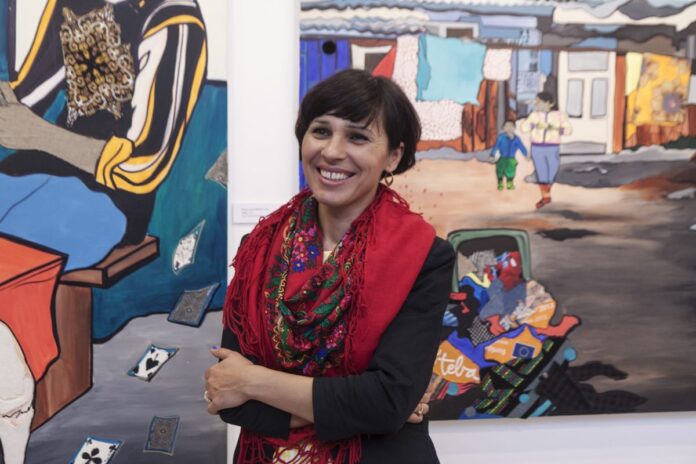Malgorzata Mirga-Tas creates vibrant textile works of contemporary art that offer a rare opportunity to see the Roma from their point of view, as a modern society and as a people with a rich heritage.
Pale lavender fabric embroidered with silver thread with a floral pattern that can be seen in the artist’s studio was once a dress. Roma in Sweden gave it to Malgorzata Mirga-Tas. In the hands of the artist, it was cut and combined with other fabrics to create a portrait of the leader of the gypsy community.
The portrait was commissioned for the solo exhibition “I Have a Dream” by Mirga-Tas, a Polish Roma artist, at the Gothenburg Konsthall in Gothenburg, Sweden.
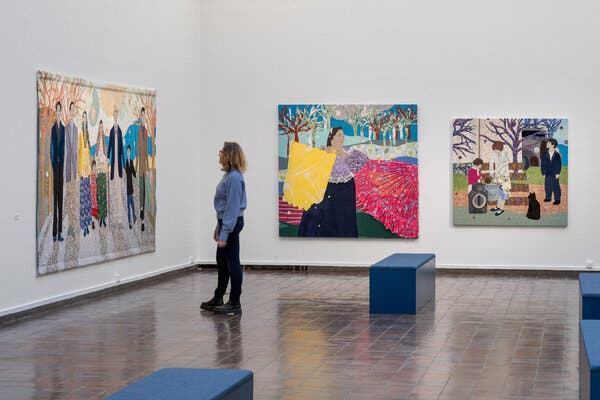
The exhibition will run until April 16th. Here are some more portraits of influential Romani women and scenes from the life of the Roma. Some of the works of contemporary art are made from local fabrics. An impressive pavilion of her artist represented Poland at the Venice Biennale.
This is the first major international presentation of the 44-year-old Mirgi-Tas since then. Her ethnic group is the largest minority in Europe. Despite this, Mirga-Tas was the first Roma artist to represent any country at an art event. She unveiled 12 vibrant floor-to-ceiling fabrics that gently depict everyday scenes from Roma’s life.
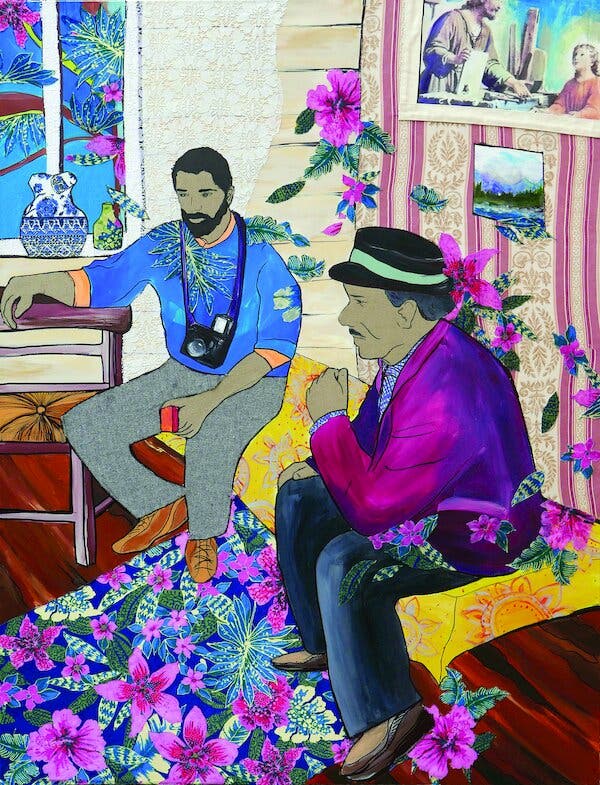
These people have been persecuted for centuries. The delicate depictions of Mirga-Tas provide a rare opportunity for the Gypsies to see their own concepts of both a vibrant modern community and a people with a rich heritage.
The artist’s workspace is an 800-square-foot private room in an out-of-town commercial district near Nowy Targ in the Polish Tatras. Her artist works from the photographs she chooses, in consultation with her subjects so that they can influence how they are seen.
Work of bright pieces of contemporary art takes place in several stages. First, she sketches her characters on paper. Then, the artist enlarges the drawings on a copier. After that, she “dresses them” with a cloth on a large table. Finally, a team of assistants sews the pieces together, while Mirga-Tas draws the details of the face and hand.
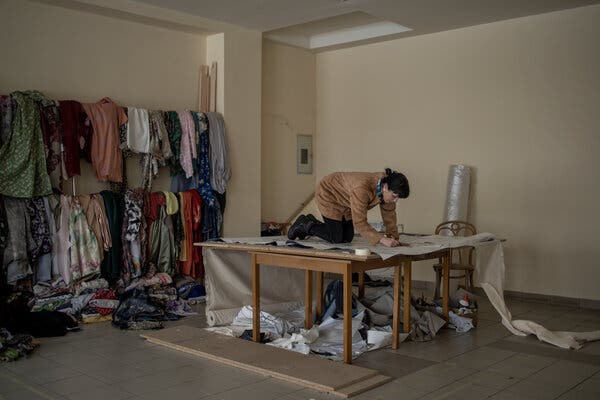
The artist lives in the nearby ski resort of Czarna Gora, a gypsy settlement of about 100 people, where she grew up and returned to after studying sculpture in the nearby city of Krakow. Traditionally, Roma communities have moved around. But at present most of the groups are settled. A large Mirga-Tas family has been living in the village since the 1940s.
Gypsies have been subjected to persecution and violence in Europe for centuries, including the enslavement and forced sterilization. Hundreds of thousands of Roma were killed during the Holocaust. This story continues to influence the Roma, who today live mainly in Central and Eastern Europe.
Most people in Mirga-Tas have access to education, housing and employment. But unfortunately this does not apply to all gypsy communities in Europe.
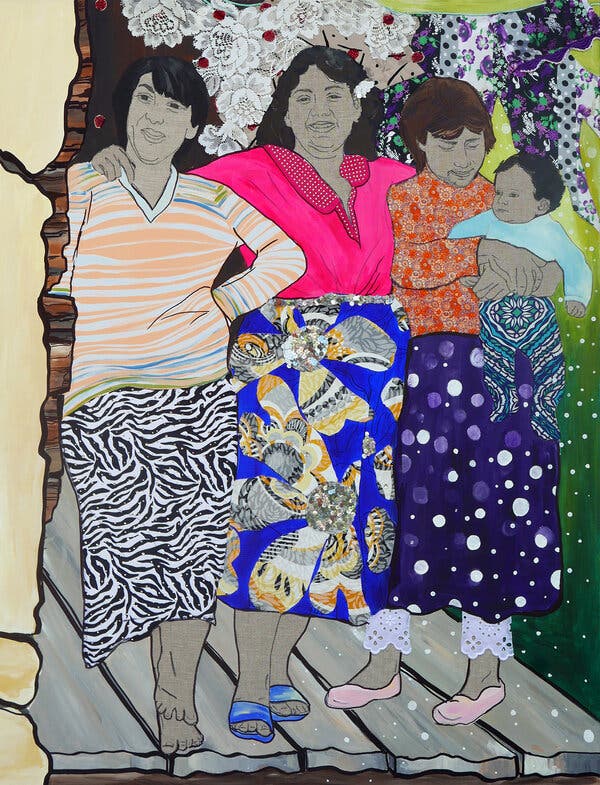
The story of the Gypsies was often told by people who often portrayed them as unhygienic, clad thieves. Mirga-Tas has made several works of contemporary art based on the photographic archive of her uncle, Andrzej Mirga, an ethnographer active in the 1980s whose photographs challenge these racist stereotypes.
Last year, Mirga-Tas was one of the few artists whose work was featured in both the Venice Biennale and Documenta, perhaps. Her work has been featured in two of the most important contemporary art exhibitions. However, outside of the bubble of the art world, she has also built her own network.
In 2010, Mirga-Tas founded the Jav Dih Foundation. He annually hosts a summer residence program on Black Mountain for Romani artists from all over Europe. There, participants discuss strategies for “how to become part of the mainstream of the art world,” she said. Because we are invisible.






